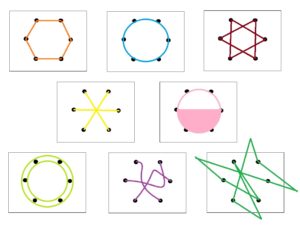
Telehealth Arriving Rituals
So, we know there are benefits to in-person work over telehealth (at least if we’re doing anything more than coaching/psychoeducation, and probably even then!). But we also know telehealth isn’t going anywhere. If you haven’t read the Teletherapy Rant, you might want to. Or you might want to skip that but look at the tip sheet for clients.
But if we’re going to be telehealth (and we are), and some clients are only going to do therapy that way (and they are), how do we give them the best experience. One thing I’ve been playing around with lately is the idea of “telehealth arriving rituals.”
Some therapists (and yoga instructors, LOL) use arriving rituals even for in-person meetings. In-person therapy has its own natural built-in ritual as well – the client drives someplace, they wait a bit, you collect them, you walk together to the room, maybe small talk along the way, you both enter the “sacred space,” and you settled into chairs or couches. Telehealth doesn’t get that (and often doesn’t get a sacred space at all!).
So, how might we do this? Here are some ideas, some of which I use:
- I have one client and we show each other our coffee cups in a sort of “cheers” moment to show that we’re both “ready to begin”
- With one client, we made mindfulness training part of the treatment plan, so we do a new (or requested) mindfulness activity in the first 5 minutes of each session
- If you like to use a singing bowl or similar in “real life,” that’s the kind of thing that could work in a telehealth setting (but I haven’t tried this)
- I’ve done variations on a body-oriented kind of thing, that I just started doing and then my clients have picked up on, like I stretch my arms up and then let them fall down and I say “mmmm, ok, I’m here, how about you?” (which I also sometimes do in-person, as well)
- I’d be interested in doing some guided imagery work in one session, and creating a mental “perfect therapy space” and then inviting the client and I to enter that space as we get online (I have a client who “built” an incredibly beautiful, luscious hidden library as his therapy space and I sometimes go there by myself!)
- Just always starting with a homework check-in is something I do with some clients in-person and via telehealth. If agenda setting is your thing, that could work, too.
- And maybe the thing to do is ask the client. Just explain that you’d like to make sure that the therapy time feels sacred, even if they’re in one of their many typical life-spaces, and ask “What could we do at the beginning of session to help you really get into the therapy mood/mindspace?”
As I think about it, maybe telehealth does have its own natural ritual in a way, as we ask the interminable but ethically required questions about where clients are and if anyone is also with them, and do the inevitable “I can hear you, can you hear me” rigamarole! Oy. At least I try to start that with, “Welcome, I’m so glad to see you!”
As a side note, I also like to encourage clients to have a TINY bit of time set aside before and after their sessions, too, which they would normally get at least in the waiting room and driving. No one seems to, though. 🙁
Oh, and don’t forget your own between-session rituals when you’re doing telehealth all day! What do you normally do between sessions? This is my (preferred) regular in-office pattern – 9:50 notes and coffee refill, 10:50 notes and bathroom break, 11:50 notes and protein bar, 12:50 notes and deep breathing or a quick walk, 1:50 notes and a bathroom break, 2:50 notes and run like mad to get in the kids’ school pickup line. (Yes, I really do notes after every session!)
Comment below: What ideas do you use or can you think of for rituals-of-virtual-arriving?
















